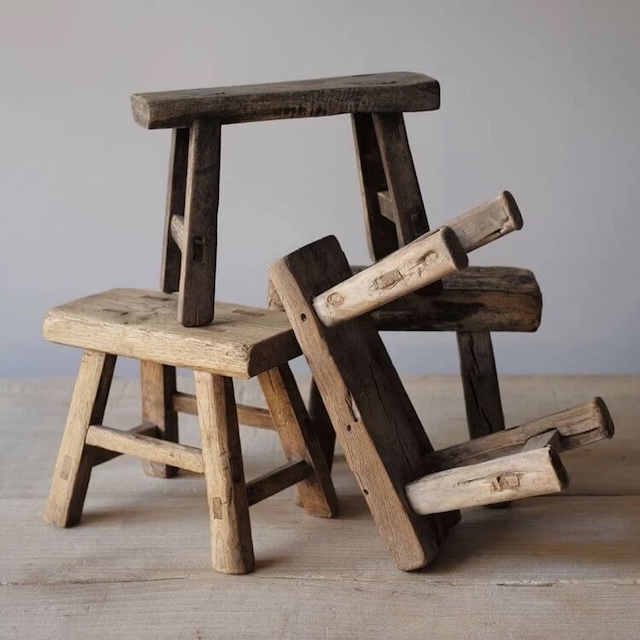Long before the hum of modern machinery filled the barns of dairy farms, the traditional wooden milking stool was a farmer’s closest companion. Its rough-hewn design may seem primitive to us today, but it was once an essential tool in every farmstead, symbolizing the daily labor and craftsmanship of simpler times. For centuries, this little stool witnessed the quiet rhythm of rural life, playing a central role in an industry that sustained communities.
The Practical Design of the Traditional Wooden Milking Stool
The genius of the traditional wooden milking stool lies in its simplicity. Typically crafted from locally available wood, these stools were designed to be lightweight, durable, and stable on uneven barn floors. Most milking stools had three legs rather than four—this wasn’t an oversight but an intentional design choice. The three-legged structure ensured stability even on the irregular surfaces of barnyards or straw-covered floors.

The seat was often a small, circular or rectangular slab of wood, just big enough for the farmer to sit while milking a cow. The portability of the stool made it indispensable for farmers who moved from one cow to another. Some variations even had straps, allowing the farmer to carry it conveniently while tending to their livestock. Though it was a modest object, the stool’s design reflected the ingenuity of a time when every tool had to serve multiple purposes.
Video:
Its Role in the Daily Lives of Farmers
In the early mornings and late evenings, farmers would make their way to the barn, armed with a traditional wooden milking stool and a pail. Milking by hand was a skill passed down through generations, and the stool became part of the ritual. Farmers would crouch low, their weight balanced on the stool, while their hands worked rhythmically to draw milk from the udders.
This intimate routine wasn’t just about milking cows; it was also a time for observation. Sitting at eye level with their animals, farmers could inspect the health of the cows, listen to the gentle sounds of chewing, and bond with the creatures that sustained their livelihood. The stool, humble as it was, became a silent witness to these moments of connection.

Historical Anecdotes and Cultural Significance
The traditional wooden milking stool even found its way into folklore and history. In rural communities, it was not uncommon for children to carve their initials into the wood or for a particularly sturdy stool to be passed down as a family heirloom.
During World War II, when many young men left for the front, women and older members of the family often took over the demanding task of milking. The stool became a symbol of resilience, representing the hard work and adaptability of those who stayed behind to keep the farms running.
In certain regions, these stools were also used for more than just milking. They doubled as seats for other farm chores, like repairing tools or feeding animals. Some were even crafted with artistic flourishes, like carved legs or decorative patterns, showcasing the creativity of their makers.

The Gradual Decline and Modern Nostalgia
As the agricultural industry evolved and milking machines became widespread in the mid-20th century, the traditional wooden milking stool slowly disappeared from daily use. What once was an essential tool became a relic, tucked away in barns or repurposed as a decorative item in rustic-themed homes.
Today, these stools evoke a sense of nostalgia. Many people associate them with memories of visiting grandparents’ farms or glimpses of rural life in old photographs. In antique shops and flea markets, a well-preserved milking stool can fetch a surprising price, valued not for its utility but for its historical charm.
Farmers who still practice traditional methods often keep a stool as a nod to the past. Meanwhile, crafters and DIY enthusiasts have found creative ways to breathe new life into these stools, transforming them into plant stands, side tables, or conversation pieces in modern homes.

Conclusion: Preserving the Memory of a Simple Tool
The traditional wooden milking stool may no longer be a must-have for everyone, but its legacy endures. It represents a time when life was slower, tools were handmade, and every object had a purpose. Though it has been replaced by modern technology, the stool remains a symbol of resilience, hard work, and the deep connection between humans and animals.
As we marvel at the ingenuity of this humble piece of furniture, let us also reflect on the traditions it represents. The milking stool is more than just a tool; it’s a story—a story of rural life, craftsmanship, and the enduring spirit of those who shaped the world with their hands.



